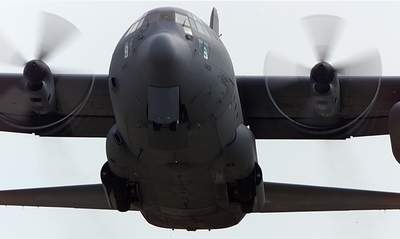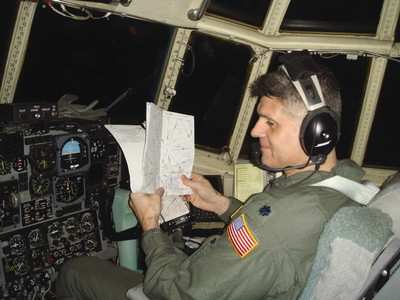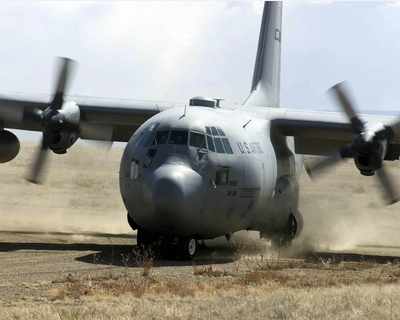Most Sorties During Two Week Rotation Originated In
Colombia
In less than two weeks, 440th Airlift Wing aircrews recently
flew more than 122.2 tons of cargo and 316 passengers throughout
Central and South America in support of Coronet Oak.

"While I can't speak for overall records, I can confidently say
the 440th flew more hours, moved more cargo and carried more
passengers in a two week period than any other unit did during
fiscal year 2008," said Lt. Col. John "JT" Bowen, 95th Airlift
Squadron pilot, referring to other C-130 units and two week
rotational support of Coronet Oak.
Coronet Oak is the continuing operation in which Air Force
Reserve Command and Air National Guard C-130 aircraft, aircrews and
related support personnel deploy to Muniz Air National Guard Base,
Puerto Rico, to provide theater airlift support for the US Southern
Command. The wing sent 18 aircrew, 24 maintainers and 9 additional
Airmen to support the operation.
Lt. Col. Glenn Collins, 95th AS pilot, said this Coronet Oak was
different than the two he previously flew. "We were directly
supporting contingency operations in South America which increased
significantly due to current events," he said. "This necessitated
our forward-deployment to South America, which is not our normal
base of operations during Coronet Oak."

The majority of the 95th AS sorties originated in Colombia.
Aircrew and maintainers also flew missions to and from Panama,
Trinidad/Tobago, the Dominican Republic and the United States.
"We flew in mountainous terrain, dirt strips,
austere and remote areas – often with short landing strips,"
said Colonel Collins. "These landing strips provided new challenges
beyond the routine training environments at Pope Air Force Base,
NC."
 The wing
flew 48 sorties in 12 days, averaging 3 sorties per day. The
taskings were far from predictable.
The wing
flew 48 sorties in 12 days, averaging 3 sorties per day. The
taskings were far from predictable.
"Each day brought an intricate ballet of trade-offs," said
Colonel Collins. "The crew for each leg had to balance multiple
factors … how much cargo we could carry verses the necessary
fuel to accomplish the mission, the runway length needed to takeoff
verses the runway available, the aircraft weight and the altitude
(which could result in reduced aircraft performance), and
restrictions on fuel locations and night operations.
Coronet Oak missions typically feature embassy resupply, support
of US troops and the Drug Enforcement Agency, medical evacuation
and alert missions. C-130 aircraft are ideal for these missions
because of their capacity and flexibility to fly multiple types of
human and airlift cargo long distances in all types of weather,
land at small airstrips ranging from dirt to asphalt to concrete,
and perform airdrops from low to high altitudes at night and under
adverse conditions.
440th Airmen couldn't offer in-depth details about their
missions.
"This sounds very Hollywood-ish, but we can't discuss the
particulars of the most interesting missions because what made them
interesting, made them classified," said Colonel Bowen, who served
as the mission commander. "I can tell you that our crews were
supporting operations in Colombia during the recent tensions along
the Colombia-Ecuador border and Colombia-Venezuela border.."
The 95th also flew a mission to transport members of the
Trinidad/Tobago military to the Dominican Republic so they could
participate in the multinational exercise, Tradewinds 2008. But
it's the teamwork under a "high ops" tempo that Colonel Bowen will
remember.
"This was our first major deployment since the unit's
realignment to Pope Air Force, NC," said Colonel Bowen, who has
supported four Coronet Oak rotations.
"While both operations and maintenance were stretched, they
proved their mettle by meeting a demanding operations tempo.

"Everyone just pitched in and got the job done, and done right.
It's the 440th's hallmark. To experience this professionalism
… in such a stark way … is what I will remember most
about this Coronet Oak."
(Aero-News salutes Lt. Col. Ann Peru Knabe, 440th Airlift
Wing Public Affairs)
 Aero-News: Quote of the Day (04.27.25)
Aero-News: Quote of the Day (04.27.25) ANN's Daily Aero-Linx (04.27.25)
ANN's Daily Aero-Linx (04.27.25) Classic Aero-TV: Veteran's Airlift Command -- Serving Those Who Served
Classic Aero-TV: Veteran's Airlift Command -- Serving Those Who Served Airborne-NextGen 04.22.25: NYC eVTOL Network, ForgeStar-1, Drone Safety Day
Airborne-NextGen 04.22.25: NYC eVTOL Network, ForgeStar-1, Drone Safety Day Airborne 04.21.25: Charter Bust, VeriJet Woes, Visual Approach Risks
Airborne 04.21.25: Charter Bust, VeriJet Woes, Visual Approach Risks






